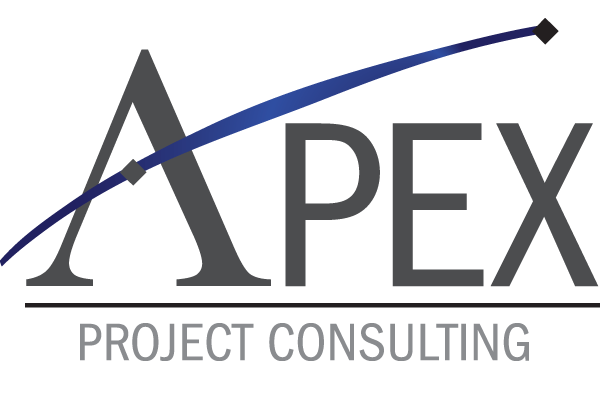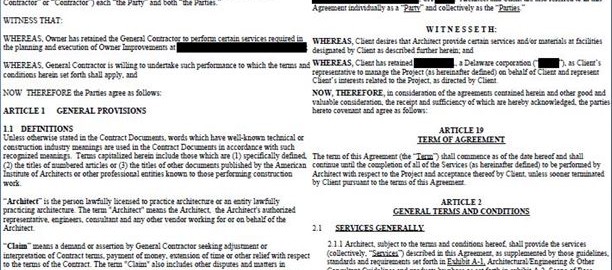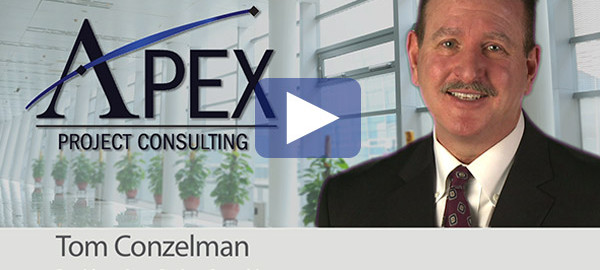Does Design-Build Save Tenants Money?
A simple question, yes? Yet few topics elicit more passion among architects and contractors than a discussion of the best method to deliver design and construction services to tenants and owners. Design-build is no exception.
To some, design-build is a project delivery system. Others say it’s a professional services procurement process; a contractual arrangement that combines the services of the architect and contractor. One thing is for sure: design-build is the default choice for a large segment of the commercial real property improvement industry. Why is less clear? Could its popularity be that it saves tenants and owners money?
What is Meant by Saving Money?
Saving money and creating value are two concepts that often get confused. They’re not interchangeable. Saving money is best understood when comparing commodities, such as coffee, steel, or concrete, where a determination of whether you saved money isn’t muddied by the attributes of the products or services. Not so with the complex and sophisticated procurement of professional design services and high-caliber contractors.
Value is the result of comparing (and quantifying) the bundled result of product, performance, and price. The product is the physical building. Performance is factors such as delivering on time, minimizing defects, and staying under budget.
And price? Well, it’s just that—the cost. To paraphrase Warren Buffet, “Price is what you pay. Value is what you get.” If you can assign a price to a commodity or distill the attributes of a bundled set of professional services down to a number, you can then make rational observations about value. However, quantifying different performance dimensions of competing design and construction professionals is challenging, even for the most sophisticated tenant or owner. Consider the design-build scenario.
With design-build, the product (the building) is no more than a concept or outline at the time the contract is signed. It’s a little like paying for a car and then specifying the features.
The Product is Purchased First
Imagine strolling into a car dealership and telling the car salesperson that you want to buy a new car. Naturally, the salesman asks, “What kind of car would you like?” You reply that you need it to seat five people comfortably, to have a retractable skylight, air-conditioning, plenty of windows, and you want high performance, without being too flashy. The salesman smiles and says, “Step right into my office. All we need to do is agree upon how much you can afford and the dealer’s profit. We can discuss the specifics of your car later.”
Sounds a little backwards, right? But isn’t that like the design-build purchase proposition?
Who would agree to a large purchase without specifics about performance or the actual product? Design-build devotees purchase first and develop plans and specifications second. The buy-now build-later, bundled approach is at the heart of the design-build contract. That makes design-build often a multi-million dollar transaction in which the largest component of the overall cost is side-stepped before the details are fleshed out. Construction costs are just temporary placeholder until “actual” costs are determined.
Once the design is complete, construction costs are calculated not by marketplace competition but simple math. With design-build, the general construction cost is only represented by a locked-in percentage for the contractor’s overhead and profit. That makes the design-build deal a no-competition, single-source arrangement without any marketplace influence. That’s brings us to another challenge: cost savings calculation.
The Marketplace Doesn’t Have Seat at the Table
The design-build procurement process is like a three-person poker game. The players are the tenant/owner, the architect/engineer and the contractor. But the game is one player short. There should be a seat at the table for the marketplace. The marketplace represents healthy, free-market competition. With design-build, the marketplace doesn’t get a say in the outcome.
Value and Value Engineering
Value engineering is a method to reduce the cost by creating and incorporating efficiencies into the design or construction of a building. Design-build blocks a clear view of cost analysis simply because there is no competition. Design-build also puts a lesser emphasis on the rewards of value engineering. The nature of the contract between the architectural team and the tenant or owner is partially responsible for this situation.
With design-build, the total price of the eventual project is computed by a simple formula. The total cost is the sum of the architect’s fee plus the general construction cost. However, it’s the general construction part that is a little more loosely defined. The total construction costs are calculated by multiplying the general contractor’s overhead and profit percentage by their subcontractor costs. This number is fluid and moves up or down, depending on the design; irrespective of competition (more about why subcontractor costs are unhelpful for determining value here).
The design-build arrangement is usually memorialized with some variation of a guaranteed maximum price (GMP), cost plus contract or equivalent contract. Why does that matter? The design-build compensation formula shields overhead and profit from competitive pressure.
GMP contracts are created to cap the total price of a project. However, the contractor’s overhead and profit are immune from market competition. Since the total product (the design and building cost) are unknown at the time the contract is signed, the only way to express the contractor’s cost is as a percentage, on top of the total subcontractor costs.
The contract created this way offers little or no incentive for the architect or contractor to value engineer. The contractor’s overhead and profit are locked in as a percentage of the total construction costs. As a result, the only tool left to tenants and owners is to use simple, macro, overall design and feature reductions as a proxy for value engineering. It’s a little like syphoning-off water from a barrel of oil and water.
Imagine a half-full barrel containing water and oil, with a spigot at the bottom. Oil floating on top represents the contractor’s overhead and profit. The water level is the sum of the materials and subcontract costs of the project—the building costs. Now further imagine that the total building cost exceeds the tenant or owner’s budget. What area do you suppose will get cut so that the tenant’s project stays under budget? You guessed it—the water. And what about the oil—the contractor’s overhead and profit? Well, that’s safe and sound, protected by the negotiated percentage mark-up and shielded from market forces by the nature of the original, single-source contract.
Thus, the only party on the project team that has to sacrifice to stay on budget is the owner. The architect and contactor simply open the spigot and let out a little water.
Consider this quote from a recent issue of Engineering News Record. In an article touting the benefits of integrated project delivery (IDP), an offspring of the design-build school of thought, Edwin Najarian, a structural engineer principal with TTG Corp., says, “The risk, as far as losing money, is minimal.” Najarian goes on to say that TTG’s profit, with respect to IPD, has been “the same or a little less.” Further, in any other situation, wouldn’t a casual observer notice that the contractor’s profit rises the more the design expands? If the contractor and architect are on the same team, doesn’t that at least suggest the appearance of a conflict of interest?
If the risk of loss for architect and contractor is transferred to the owner and their overhead and profit is locked-in, why would a tenant use the design-build approach?
What’s the Case for Using Design-Build?
If design-build doesn’t produce measurable savings, or at least comparisons, why would this procurement process persist?
Faux Value Engineering: Many users of the design-build approach counter the claim of inscrutable cost savings by asserting that they can always adjust the architectural design to fit their construction budget. That’s true, but it’s simply draining the water. This arrangement only reduces the content or specifications of the design, and thus, the building.
Continuous, Real Time Estimating: Because the contractor and architect are hired together, cost estimating occurs throughout the design process. Proponents suggest this is a major advantage. And it is. But any tenant can get pre-construction estimates. Simply purchase them. Tenants and owners can purchase pre-construction estimating services like they would any other professional service. The incremental cost of a pre-construction estimate is likely a fraction of the total construction costs.
Speed to Market: Design-build is popular among industry supporters for its perceived ability to deliver projects faster. This is a phantom argument. All teams can start some portion of the project before the design is finalized. Demolition is one example. But all projects need permits and inspection. No permits, no inspections. Design-build does nothing to change this.
Moreover, project delivery speed is often proportionate to the cost. The tighter the delivery schedule, the higher the design and construction costs. A compressed design-build schedule actually contributes to higher costs.
Ease of Use: Tenants aren’t expected to be design and construction procurement pros. More than likely, their core expertise is running their business. Design-build simplifies the procurement process and makes the rigorous, selection process go away. Sometimes money (i.e. cost) just doesn’t matter as much as one might think.
For some large organizations, the impacts of cost and value doesn’t resonate as acutely up through the company’s accounting central nervous system. In some cases, the costs simply aren’t highly scrutinized. The simplicity of the procurement process plus nonchalant trust makes design-build is a logical match for this type of organization.
Putting it All Together
Recognize that design-build is a procurement choice, not a project delivery method. Know the differences between the various procurement processes. Use that knowledge to match your project and clients’ needs to the project delivery methodology. Saving money and getting value may not be a paramount concern for your project.
Agree to respect the procurement choices of tenants, owners and others to select a methodology that works for them. There is no one-size-fits-all solution.
As to the threshold question in the title, I would paraphrase Edward Deming, you can’t manage what you can’t measure. Design-build may have numerous advantages for a wide swath of the real property improvement industry. But if you can’t measure or compare costs, it just may be that provable cost savings isn’t one of them.
Apex Project Consulting, Inc. is based in Orange County California, provides one-of-a-kind, full-spectrum project management across a wide variety of project types, including both ground-up and commercial tenant improvements, throughout the U.S. as well as internationally. Apex has managed over 1,100 projects, from raw land development, due diligence and design through construction, including commercial office, industrial, healthcare, life science, labs and critical environments.
Mr. Conzelman is a licensed electrical contractor and general contractor, LEED® AP, CCM, and a California RE Broker License 01128636. Mr. Conzelman graduated from Western State University, College of Law and has taught Contracts-for-Contractors. Tom Conzelman is the author of “Protect Your Project”, the innovator behind the No Change Order Guarantee™ and the creator of the revolutionary Negatively Inferred Scope™ procurement process; Stopping Specification-Driven Change Orders and Rework.




 for a little extracurricular OJT on the company’s nickel. The point is this, ignoring what-you-don’t-know-you-don’t-know, will cost you.
for a little extracurricular OJT on the company’s nickel. The point is this, ignoring what-you-don’t-know-you-don’t-know, will cost you.







